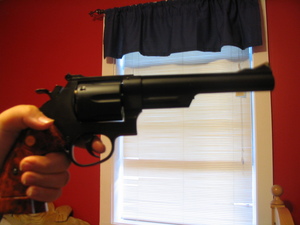There are very few people who can claim that they make their own belts. Even if they’re really good with crafts they probably think belts have to be purchased. If they only knew how easy it was to make a belt, though, they’d put all that saved money into another purchase and make all their own belts from now, on! And, when you buy belts you might limit yourself to a couple or so, but when you can inexpensively make them yourself, the sky’s the limit! Make belts to match each and every outfit you own or make belts to give to your friends and family as gifts!
Many belts are leather, of course, but some are made out of vinyl or “Naugahyde”. It’s difficult to find real leather pieces – long enough to make a belt – at any old fabric store. Go online to find leather but don’t be surprised to learn that it’s quite expensive. Since most places require you to make a minimum purchase this can get quite costly unless you intend to make several belts. Another option, though, is to use vinyl or Naugahyde. Check with a local upholstery shop to get the best deal. Upholsterers who do only furniture work might have the vinyl available in colors like brown or black. An upholsterer that does automotive and/or marine work will likely have a must larger color choice. If you choose something they have in their “leftover” pile you can probably get a really great bargain. Upholsterers often have a yard or two of vinyl leftover from each job. If you only want a strip cut from the leftovers you can likely get the deal of a lifetime. Have a length and width in mind before going. Ask about the price for a yard and the price for a long, wide strip to see which size is the best bargain. Some upholsterers might not be willing to cut a strip off of a full yard in case they could later sell that yardage.
After you’ve decided on the material you will use you can start making the belt. Cut it to the width you want – make sure that width is suitable for the belt loops on the intended outfit – but use a different technique to decide on the length. Measure your waist and add at least eight inches to the figure. This will allow enough belt material to go through the buckle. After cutting the width and length you’ll then assemble the belt.
If you want the perfect fit for the belt, wrap it around your waist, then mark the area that gives you the best fit. Simply mark a dot on the outside of the belt, in the center, at the proper area. Now you can place a dot one inch in front of the first dot, then add more dots, separating them by an inch each. Four or five dots will suffice. These dots will mark the areas where you’ll create the holes for the belt buckle. After drawing them on it’s time to add the buckle.
Choose an appropriate buckle for the belt you’re making. You’ll find a variety of them online or at a fabric store. Use a small buckle, of course, for a narrow belt and a much larger buckle for a wide belt. If you choose the wrong size buckle you might have to cut the belt down to a narrow size you didn’t want so make sure you know what width you’re working with before purchasing the buckle.
Cut one end of the belt to a point shape. Slide the buckle over the opposite end of the belt. Fold the fabric under, about three inches, then choose how you wish to secure it. Before securing it cut a small slit in the center of the fold so that the metal prong of the buckle can slide through. Position a short, thin piece of the material over the belt to make a loop for the end of the belt. Temporarily stitch or glue the ends of this piece to the back of the belt, along the edges, with the wrong side of the loop lying against the right side of the belt. When you slide the buckle on, then glue or sew it down, you’ll cover the ends of this loop. You can sew the material down, but if you’re using really thick material, an ordinary sewing machine can’t cut the mustard. Instead, you can choose to glue the material down. Or, place one or two snaps on the belt and the buckle will be interchangeable. The snaps must be substantial ones like those used for commercial jobs.
Once the buckle is secure the belt is finished. You can, however, add embellishments if you wish. Any number of items can be glued to the belt, including conchos, beads, decorative buttons, fake jewels, leather shapes, wooden shapes and other selections. Craft stores are full of miniature novelties that are perfect for personalizing the belt. Once you’ve made one belt, you’ll want to make many more, so think about purchasing enough material to make several belts. It won’t go to waste!
Reference:
- Purchase belt buckles here: www.michaels.com



